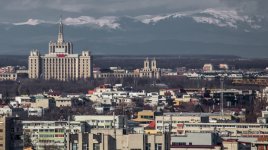JajarBingan
Regular Member
- Messages
- 157
- Reaction score
- 51
- Points
- 0
- Ethnic group
- Romanian
- Y-DNA haplogroup
- I-PH908*, DYS561=15
- mtDNA haplogroup
- T2a1b1a
If you think Muntenia is lowlands, how about Netherlands : ) ?
Depends what you are understanding by most. If you understand by most more than 50% and flat what is below 100m altitude,that is possible.
Here is the physical map of Muntenia:
http://www.locatiicazare.ro/wp-content/uploads/2009/09/hartaTURISTICA-muntenia.jpg
Is very possible that 50% or more from the land of Muntenia is lowlands/plains.
Depends what is considered plains,now. Ploiesti is considered in the plains or in the hills?
Pitesti? I think Pitesti is considered to be in the hills.
The origin of the name comes from the mountains:
https://ro.wikipedia.org/wiki/Muntenia#Originea_numelui
If you go from Bucharest to Giurgiu, you will notice that even in these "flat lands" some villages are having hills near them.
Not even Bucharest is on pure flat land, we have Dealul de la Universistate, Dealul de la Sincai/Tineretului metro station , dealul de la Cotroceni and so on
.
https://ro.wikipedia.org/wiki/Dealul_Spirii
https://ro.wikipedia.org/wiki/Dealul_Mitropoliei

https://dreamtrips.ro/2011/05/palatul-cotroceni.html
So as you can see, Bucharest is not actually in pure flat lands but in a small hills area!
Did not number the hills from Bucharest to check if there are 7 as in Rome, but who knows.
To be fair I'm not quite familiar with most of Muntenia, but on a map it just looks flat. I know that it's supposed to be mountainous around Sinaia, but that seems like a small portion of the total land.
When I visit Bucharest from Iasi, I usually go straight down through Vaslui, Barlad, Focsani, Buzau and then Bucharest. It's a very plainy view.



